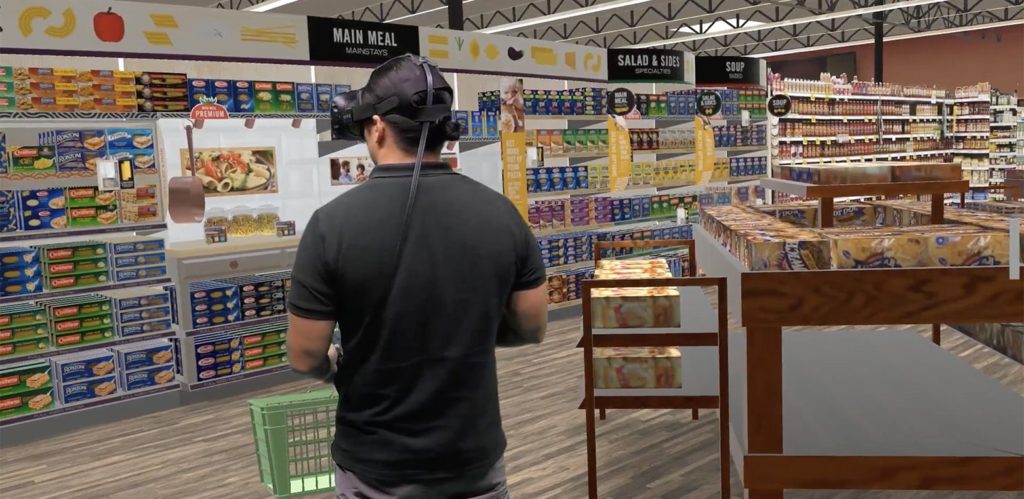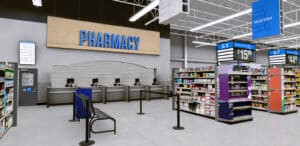7 Retail Industry Trends to Watch Out for in 2021

Today, the rapid advancements in technology have led to almost every facet of our lives shifting online, catering to a population that is more adaptive to the current times. The retail industry is no exception.
The current world situation has vastly impacted retail industry trends in 2021, with an increasing number of people resorting to online shopping for a safer, hands-free shopping experience. And with the global pandemic showing no signs of stopping, it looks like this retail industry trend is here to stay.
Shopping online not only provides easier access but also saves time and is often cheaper than shopping in brick-and-mortar stores. Companies have thus started scrambling to adapt to innovative tools, software, and equipment to survive the competition and get ahead in the race.
Here’s a list of 7 future retail technology trends that are bound to rule in 2021.
Virtual Reality in Retail Industry
One innovative tool helping businesses gain competitive advantage is virtual reality (VR). AR and VR solutions are the latest technologies influencing the digital transformation faced by physical stores.
Although it is still in an emerging stage, VR is taking the retail world by storm because it allows customers to have an in-store experience online. For category managers and insights teams, it has become an invaluable method of monitoring their consumers’ requirements and preferences.
There is no better time to start incorporating VR in retail businesses. Virtual reality offers several current applications for retailers, including designing retail store layouts, planning merchandising sets, and then testing those solutions using VR shopper research.

VR store planning software allows manufacturers and retailers to build, manage, and study their retail innovations more efficiently than ever before. It helps organizations cater to the ever-changing needs and demands of their consumers, thereby allowing them to enhance customer experiences.
If you’re looking to gain superior insights that provide your customers a unique shopping experience, then VR is the way to go.
Emerging Voice Commerce
With Apple’s Siri, Amazon’s Alexa, and Google’s Assistant, we’re no novices at using voice commands to look for products and services online.
Although just like every other innovation, there’s been a mixed response about its effect on the retail industry. Some say it’ll make the future of business, and some say it’ll break it. To establish its worth and be beneficial, it requires a unique, multi-channel approach to appeal to the customers to use the power of voice to shop.
Voice commerce is constantly changing to better adapt and deliver to their consumer base.
Autonomous Vehicles
Autonomous vehicles operate without human involvement. We’ve heard jokes on flying cars in 2020, but honestly, I think this is a much better substitute. You don’t have to drive, and you don’t even have to be in the driver’s seat — the future is here and it’s beautiful.

An autonomous car is equipped to go wherever a normal car would and do everything a normal, experienced driver would. We’ve heard people rave about Tesla-equipped with Traffic-Aware Cruise Control and Autosteer, and now we see why it has an appeal for the global audience.
Virtual Fitting Rooms
With brands not having the same sizing pattern, finding an outfit that fits you has become nothing short of a hassle. For every clothing item you like, you have to make multiple trips to the fitting rooms. With so many stores available online only, how do you ensure you get the right fit? The answer is virtual fitting rooms.
Through virtual fitting rooms, once you’ve logged in your basic measurements like height, waist, arm length, etc., a virtual doppelganger with the exact measurements as you will appear on the screen. Just like in an in-person store, you can then determine how a dress would look on you by checking how it fits your doppelganger at various angles.
This technology can successfully lessen the number of returns, thus having a positive impact on the environment by reducing the carbon footprint associated with return shipping.
Zero Staff Stores
We’ve been using self-checkout at a few select stores for quite some time and so far it’s been a smooth sailing experience. Technology has creating informed, self-sufficient shoppers that require less in-person interaction.
This trend has been seen at Sephora, a makeup retailer that implemented a black basket initiative that translates to — “I don’t want help.” So, if you’re holding a black basket, you will not be approached at every aisle by an executive to help you shop. It’s an effective, low-cost strategy.
The pandemic has greatly impacted the shift in shopping trends. According to a recent survey, a whopping 87% of customers prefer contactless or self-checkout stores. That alone is indicative of the widespread importance of catering to the rising demand. Alternatively, barcodes and QR codes can be used to check product information and pricing without having to physically inspect the products.

Zero Staff Stores is a huge step towards ensuring better health by reducing human contact. A significant downside of this, however, is that it can reduce the availability of jobs for salespersons and cashiers/staffers.
Increasing Social Commerce
Remember having to sit through not one, but two ads on YouTube and having ads pop up at the worst possible time when you’re listening to Spotify? That’s social commerce in all its glory.
Social commerce uses social apps and websites to advertise, promote, and sell products, reaching a wider audience compared with broadcasting on television. Its success is based on likes, comments, retweets, and reshares.
Social media is not just about communicating and connecting with friends, family, and people around the globe. It is now a platform for e-commerce.
Facebook has been leading the bandwagon for quite some time now. With over 2.7 billion people accessing the platform worldwide, it’s a powerhouse for advertising virtual goods. Facebook’s impact on the industry is bound to be both consequential and long-term.
Facebook drives traffic to websites through strategically placed ads. You can buy some business’ products and services on Facebook itself instead of going to a third-party website.
Augmented Reality in Online Shopping
If you’ve ever experimented with Snapchat’s or Instagram’s filters, you must have become familiar with augmented reality (AR).
Simply put, AR has the power to change your perspectives and environment. Much like VR, it is immersive technology. Purchasing things online usually has a 50/50 chance of a hit or miss. Through AR, shoppers can preview products and experience services before buying them. AR can improve consumers’ shopping experiences and also be an effective tool in attracting new customers. Brands such as L’Oréal have also started using AR to offer consumers online make-up try-on services.

Consumers are provided with a more immersive experience from the comfort of their homes while retaining the benefits of an in-person experience. Virtual reality is thus conquering not only the digital space but is slowly making its mark on the real world as well. These retail trends are indicative of it.
The changing behavioral patterns of consumers today as well as the technological developments can prove beneficial to the online as well as offline retail worlds.
Subscribe to our newsletter
Get our blogs and the latest retail news delivered to your inbox monthly.
Recent Posts
Pharmacy Merchandising Tech: 5 Powerful Ways to Boost OTC Sales
Here’s a staggering fact: Americans now buy over-the-counter (OTC) products 26 times a year-that’s 8x more often than they visit the doctor. With the OTC market exploding from 42 billion to 70 billion by 2033, the race is on for shelf space in 750,000+ stores. But here’s the problem, 44% of shoppers discover over-the-counter products…
How to Use 3D VR for Smarter Store Layout and Design
Explore how VR is revolutionizing grocery store layout and design planning by offering enhanced blueprint visualization in immersive 3D environments. Grocery store layout strategy is essential for establishing a positive and productive customer experience. A thoughtfully designed layout not only improves convenience but also fosters a sense of discovery, leading to longer, more enjoyable shopping…
Sauce & Condiment Sales Heat Up as New Tech Helps Out
Young Millennials and Gen Z consumers have fueled a boom in hot sauce trends and condiment sales. This surge is pushing leading brands and retailers to elevate their game with smarter virtual product innovation and assortment optimization. The condiment and hot sauce industry is thriving in 2024, driven by evolving consumer tastes and the growing…



